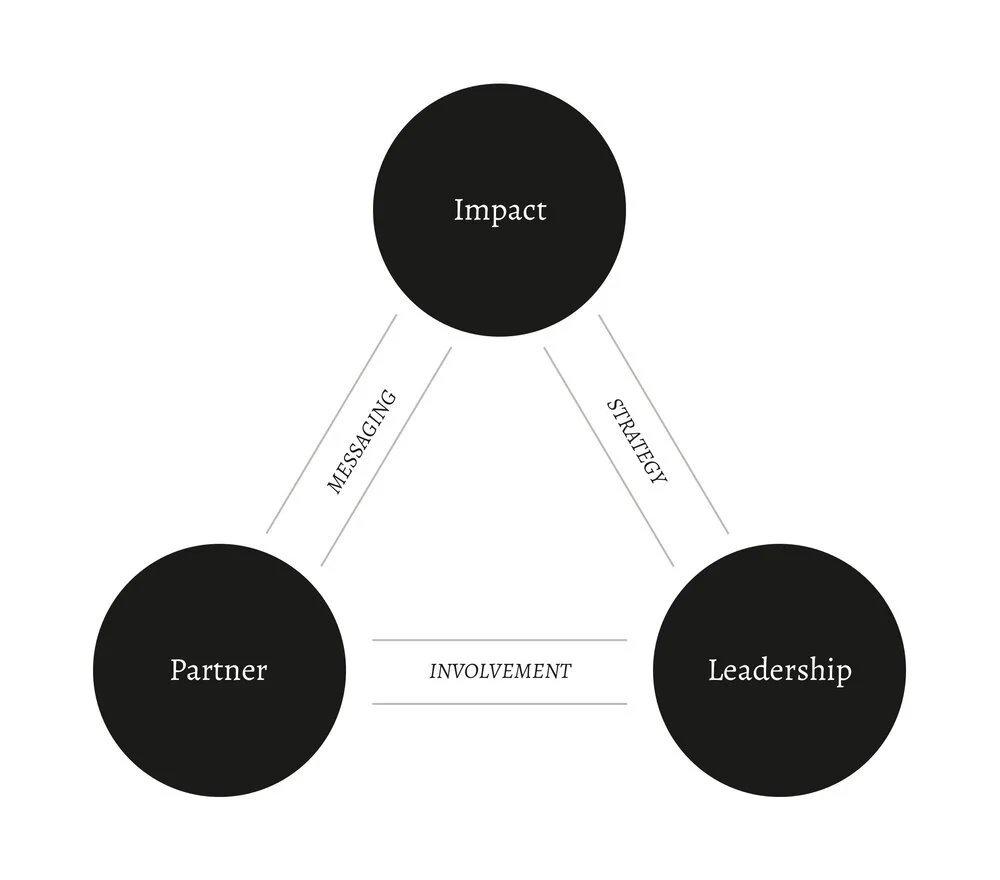The Holistic Partnership Model
If there is a glaring difference between the traditional model and a holistic partnership model, it is the introduction of a new, direct relationship created between partners and the ministry impact. In order to promote this new relationship, it is necessary for leadership to “get out of the way”.
Leadership must understand their role is not to serve as the sole connection between partners and impact but to facilitate an ever-growing ownership base by leading other like-minded partners to join them in accomplishing the impact.
A healthy ministry requires an interdependent relationship between leadership of the organization, the impact goal, and partners. As you can see, this interdependency creates a triangle with all three ingredients working together to create synergy and build momentum.
As illustrated above, a holistic partnership model has three key ingredients and three unique relationships between these ingredients. The relationship between leadership and impact is the ministry strategy which provides the basis for the programming. The relationship between impact and partners can be viewed as messaging and represents the source of critical feedback to partners about the initiative. Finally, the relationship between partners and leadership can be described as involvement and includes any and all resources (prayer, money, time, or influence) committed by the partners to the leadership.
In order to understand how a holistic partnership model remedies the flaws of the traditional, linear funding model, we work backwards to resolve the strategic misalignment. When there is a direct relationship between ministry impact and the partners, the motivation for partnership isn’t generated from leadership (as in the linear model) but is correctly generated from the impact, solving part two of the misalignment. When partners are then empowered to understand their role in producing impact, this involvement allows the leadership (both agency and personnel) to align themselves together and define funding success as stewarding available resources to accomplish impact, solving part one of the misalignment.
The key transition is for our communication with partners and therefore our invitation for involvement to promote the strategic impact, rather than the field worker or even the organization as a whole.
Now we have a model capable of allowing the revenue to scale with the strategy for impact.
So how do we begin implementing a holistic partnership model and re-align our organizations so that the funding model matches ministry impact? How do we move beyond the first two phases of simply verifying the global church is willing to participate to the third phase of actually optimizing our mission agencies for maximum growth and impact? In order to achieve this transition, I believe agencies need to
1) understand the holistic partnership model within their organizational culture and context; and
2) begin to restructure themselves around their smallest strategic unit.
Please let us know if we can help you discover your holistic model.

